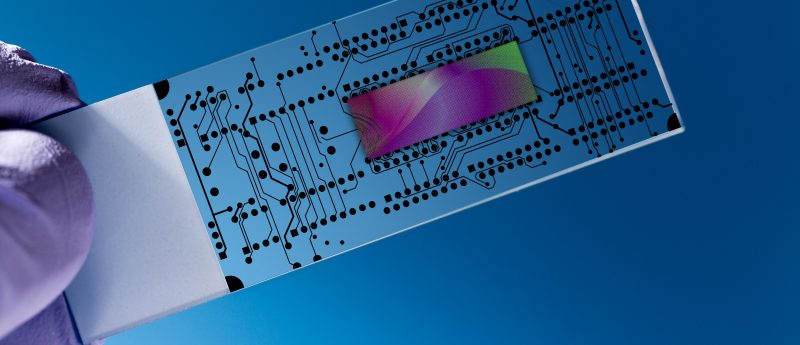‘Heart-on-a-chip’ engineered by Lawrence Livermore researchers

Lawrence Livermore National Laboratory (CA, USA) researchers have developed new ‘heart-on-a-chip’ technology that utilizes microelectrodes to measure compound effects on heart function. The findings published in Lab on a Chip, indicate how the engineered platform could reduce the need for human and animal testing.
Being part of the in vitro Chip-Based Human Investigational Platform (iCHIP) project, this technology tests the effects of biological compounds utilizing replicated human systems. The researchers recorded electrical and cellular signals from human heart cells that were grown on a multi-electrode array. The team believe this is the first technology capable of recording both electrophysiology and contraction cell frequency.
Elizabeth Wheeler (Lawrence Livermore National Laboratory) commented: “This platform allows you to do high-throughput screening of pharmaceutical drugs and predict their effects on the heart. This research allows us to measure two functions of the heart, contraction and electrophysiology, for the first time. There’s still validation and data we need, but eventually it would allow us to reduce the need for animal testing.”
The team created ‘heart-on-a-chip’ through culturing human cardiac cells for 9 days which lead to tissue growth. After a further 2 days the cells started to contract and ‘beat’. Then exposure to norepinephrine was utilized as a stimulant, demonstrating an increase in cell beating. This change in heart rate was monitored by the microelectrode array, allowing the team to conclude the accurate and non-invasive measurement of electrophysiology and heartbeat in real-time.
Kristen Kulp (Lawrence Livermore National Laboratory) stated: “The real strength of the platform is being able to measure both the electrical and mechanical aspects of the heart at the same time. One of the chemicals that we used to validate the platform actually decouples the electrical signal from the cell beating. When the cells were exposed to this compound, the electrical signals continued normally, but the cells stopped contracting. To successfully develop new drugs, we need to know the full spectrum of effects that they can have on cell function.”
In the future it is hoped that the ‘heart-on-a-chip’ technology could aid drug development by assessing heart tissue function. Fang Qian (Lawrence Livermore National Laboratory) concluded: “With high-throughput, high-content screening you could test many drugs at the same time and get a lot of data at once. It’s staggering how much money and time is involved in getting drugs to the market. This could speed up the process.”
Sources: Qian F, Huang C, Lin Y-D et al. Simultaneous electrical recording of cardiac electrophysiology and contraction on chip. Lab Chip. doi:10.1039/C7LC00210F (2017) (Epub ahead of print); https://phys.org/news/2017-05-lab-unveils-heart-on-a-chip.html





